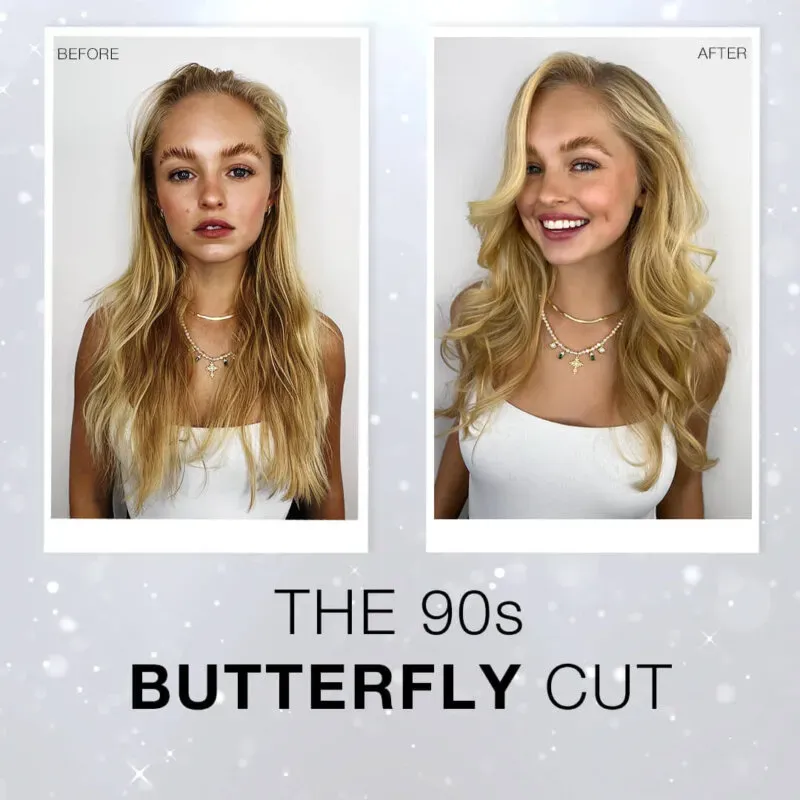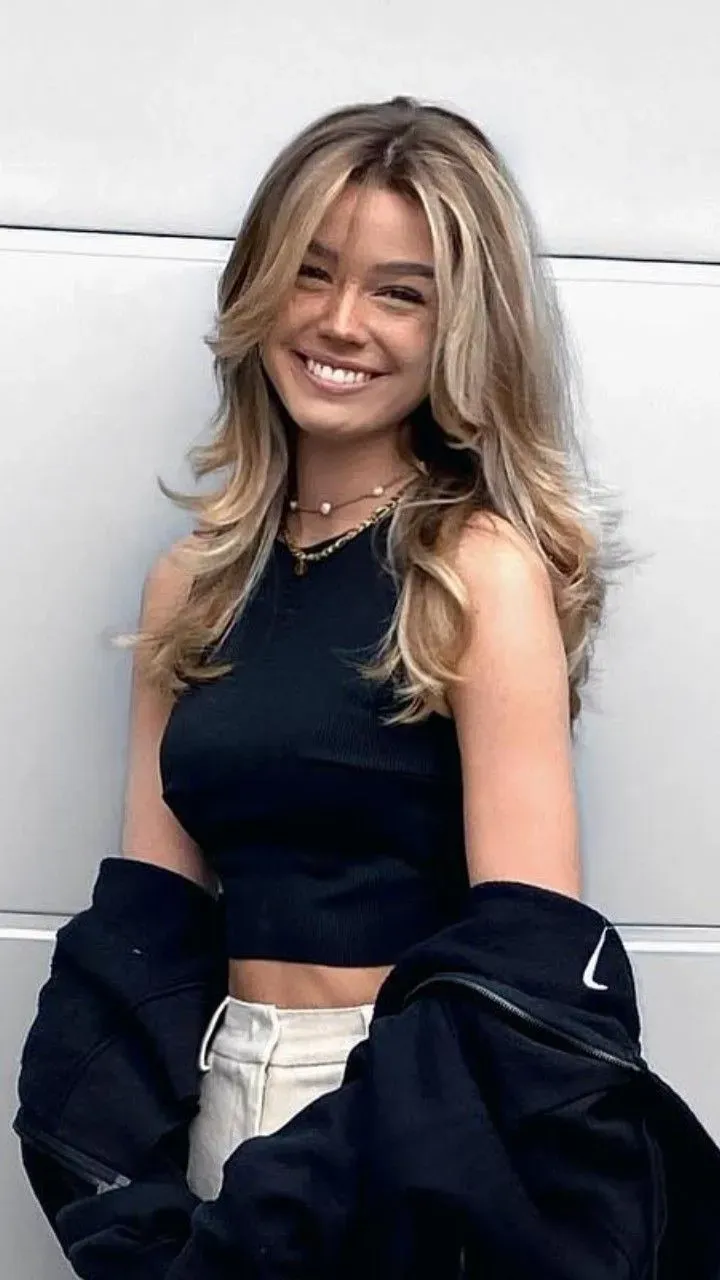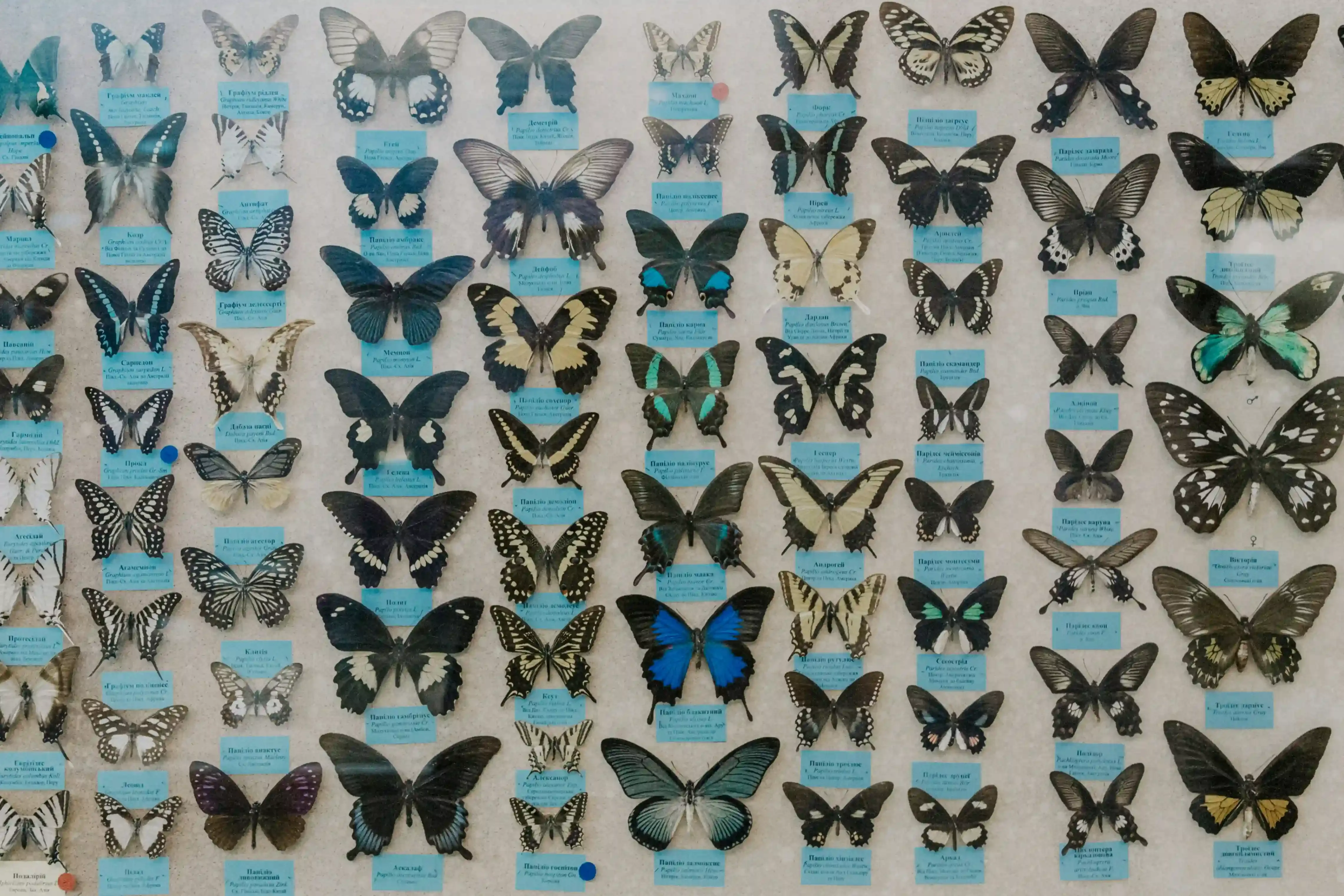Table of Contents
Remember flipping through magazines in the 90s? Chances are, you saw the butterfly cut everywhere. It was the defining layered hairstyle of the decade, giving everyone that effortless volume and face-framing flair. Think big, bouncy layers that moved like, well, a butterfly's wings. Now, this iconic look, the butterfly cut 90s, is making a serious comeback. It's not just nostalgia; the cut offers a practical way to add movement and body without sacrificing length. If you've seen it popping up on your feed and wondered how to get in on the action, you're in the right place. We'll dive into what made this cut a 90s staple, why it’s having a moment again, and exactly how you can achieve and style your own version of the butterfly cut 90s. Get ready to explore the layers that shaped a generation.
What Exactly Was the Butterfly Cut 90s?

What Exactly Was the Butterfly Cut 90s?
Alright, so picture this: it's the 1990s, grunge is a thing, but so is looking polished and effortless. Enter the butterfly cut 90s. This wasn't just some random chop; it was a strategic, layered masterpiece designed to create maximum volume and movement without taking away significant length from the back. The magic happened with shorter layers around the face and crown, often starting near the cheekbones or jawline, blending seamlessly into longer layers down the back. It gave the illusion of having short hair when styled forward, framing the face dramatically, while still maintaining that coveted long hair vibe from behind. Think big, airy, almost feathered layers that bounced and flowed with every turn of the head. It was the ultimate "cool girl" hair – glamorous but approachable, like you just woke up looking fabulous, even if it took 45 minutes with a round brush and a can of hairspray.
Why the Butterfly Cut 90s Ruled the Decade

Why the Butterfly Cut 90s Ruled the Decade
It Delivered Effortless Volume and Versatility
so why did everyone suddenly want the butterfly cut 90s? Simple. It solved a major hair problem: getting volume without endless styling. The shorter face-framing layers created instant lift and body around the crown and face, making hair look fuller and bouncier. You could blow it out with a round brush for that super-glamorous, feathered look, or just let it air dry for a more relaxed, piece-y vibe. It worked on different hair textures, though it truly shined on medium to thick hair that could hold the shape. This cut wasn't high maintenance; it was versatile. You could wear it down and bouncy, pull the top layers back for a half-up look that still showed off the face-framing bits, or even pin it all up, letting those front pieces fall out casually. It gave people options, and in the 90s, having options that looked this good was gold.
Celebrities Made It the Must-Have Look
Let's be real, trends often start with the people we see on screens and in magazines. The butterfly cut 90s was practically the official hairstyle of Hollywood and pop music royalty. Think Jennifer Aniston as Rachel Green – her early "Rachel" cut phases definitely had that layered, face-framing vibe, evolving into something very close to the classic butterfly look. Mariah Carey's big, voluminous hair often featured these dramatic layers. Even supermodels were rocking versions of it. Seeing these icons sporting the cut made everyone else want it. It became synonymous with being fashionable, confident, and having that sought-after effortless glamour. It wasn't just a haircut; it was a statement that you were current and cool.
So, what made the butterfly cut 90s such a hit?
- Instant volume and body
- Versatility in styling
- Flattering face-framing layers
- Celebrity endorsement
- Looked great styled or air-dried
Getting the Modern Butterfly Cut 90s
Talk to Your Stylist About the Vibe
so you're ready to dive in and get this look. The first step is crucial: finding a stylist who gets it. Don't just walk in and say "butterfly cut 90s" and expect magic. Bring pictures! Show them examples of the modern take you like – maybe it's softer, maybe it's bolder. Explain the *vibe* you're going for. Are you after maximum Rachel-level volume, or something more understated? A good stylist will understand the underlying structure of the cut – those face-framing layers, the seamless blend into the back – and be able to tailor it to your hair type and face shape. Communication is key here. Ask them if your hair density and texture are suitable. They might suggest slight modifications to make sure it works for *you*, not just a carbon copy of a photo.
It's not just about chopping layers; it's about understanding how those layers will fall and behave with your specific hair. A skilled stylist knows how to cut layers that support each other, building volume instead of making hair look thin or choppy. They'll consider things like whether you have fine hair that needs strategic layering for lift, or thick hair that needs weight removed without looking bulky. Don't be afraid to ask questions about the process and what kind of maintenance it will require.
Key Elements of the Modern Cut
So, what are you actually asking for when you request a modern butterfly cut 90s? The core elements remain: significant face-framing layers that are shorter than the rest of your length, blending into longer layers throughout the back. The "modern" twist often involves a slightly softer edge, less bluntness than some of the original cuts, and more emphasis on seamless blending. The shortest layers typically start somewhere between the cheekbone and the jawline. These are critical for creating that signature face-framing effect and giving the illusion of shorter hair when styled forward.
The longer layers in the back are just as important. They provide the base length and prevent the cut from looking like a mullet (a common fear!). These layers should be cut to encourage movement and bounce, often with softer ends. The goal is a cut that looks amazing styled with heat, but also has a great shape and flow when air-dried or styled minimally. It's a layered cut designed for maximum impact with relatively low fuss, capturing that effortless 90s cool but updated for today.
What's the biggest difference between the original butterfly cut 90s and today's version?
Styling Your Butterfly Cut for Maximum Volume

Styling Your Butterfly Cut for Maximum Volume
so you've got the cut, now how do you get that glorious, gravity-defying volume that defined the butterfly cut 90s? It's all about technique and product choice. The classic method involves a round brush and a blow dryer. Grab sections of those face-framing layers, place the brush underneath at the root, and blow dry upwards and outwards, rolling the brush as you go. This bevels the ends and lifts the root, creating that beautiful swoop. Don't forget the crown! Lifting those shorter layers here with a round brush or even velcro rollers after blow-drying is key for height. Finish with a light-hold hairspray or a texturizing spray at the roots to lock in the lift without making it stiff. It takes a little practice, sure, but the payoff is hair that looks like it belongs on a 90s music video set.
The Resurgence: Why the Butterfly Cut 90s is Back

The Resurgence: Why the Butterfly Cut 90s is Back
Nostalgia is a Powerful Drug, Apparently
Look, let's not overthink this. The 90s are back, full stop. Fashion is revisiting oversized everything, slip dresses, and chunky shoes. Beauty trends follow. It was only a matter of time before iconic hairstyles like the butterfly cut 90s fluttered back into relevance. People crave familiarity and a bit of fun in uncertain times, and the 90s aesthetic offers that in spades. It's a visual comfort food. Plus, let's be honest, a lot of us who lived through the 90s are now adults with disposable income and a willingness to revisit the styles we loved (or coveted) back then. The younger generation sees it as fresh and retro. It's a perfect storm of throwback appeal.
It Just Works for Today's Hair Goals
Beyond the nostalgia, the butterfly cut 90s actually fits pretty well with what people want from their hair right now. Everyone's chasing volume and movement without wanting to spend hours with hot tools every single day. This cut delivers that inherently. The strategic layering removes weight where needed and adds lift where you want it, making styling quicker and more effective. It offers that sought-after "effortless" look that social media loves. You can get great bounce with just a blow dry or even air drying with the right products. It’s less about rigid perfection and more about lived-in texture and dynamic shape. That practicality is a huge selling point in our busy lives.
Why are we seeing the butterfly cut 90s everywhere again?
- The general 90s fashion and beauty revival.
- Its ability to create volume without losing length.
- It's surprisingly low-maintenance compared to other layered cuts.
- It looks great on social media (hello, bouncy hair videos!).
- It's versatile for different styling techniques.
Modern Takes Make it Accessible
The version of the butterfly cut 90s you see today isn't always a strict carbon copy. Stylists have adapted it. Layers might be softer, blending more seamlessly. The face-framing pieces can be tailored more precisely to different face shapes and hair textures. It's less about a single rigid cut and more about the *idea* of the cut – those distinct face-framing shorter layers paired with longer length. This adaptability means it works better for a wider range of hair types, from fine to thick, straight to wavy. It's the spirit of the butterfly cut 90s, updated for 2025, proving that some styles are just too good to stay in the past.
Embracing the Enduring Appeal of the Butterfly Cut
So there you have it. The butterfly cut 90s wasn't just a fleeting trend; it was a hairstyle that offered volume, movement, and that sought-after face-framing effect in a way few others could. Its return isn't surprising, given its versatility and ability to work on various hair types and lengths. Whether you're chasing that full-on 90s vibe or just want a modern take on layered hair, the core principles of the butterfly cut remain effective. It's a style built on clever layering, designed to make your hair look fuller and more dynamic. If you're considering a change that offers impact without losing significant length, bringing up the butterfly cut with your stylist might just be the move. It's a classic for a reason.